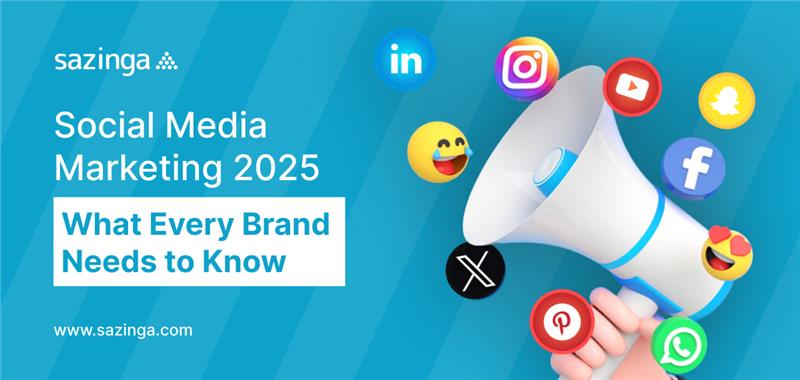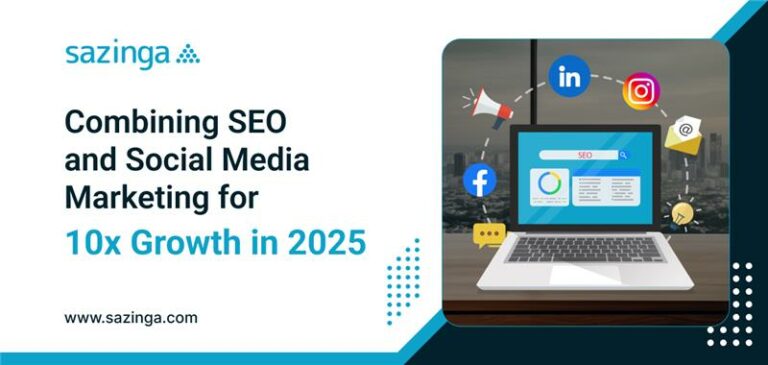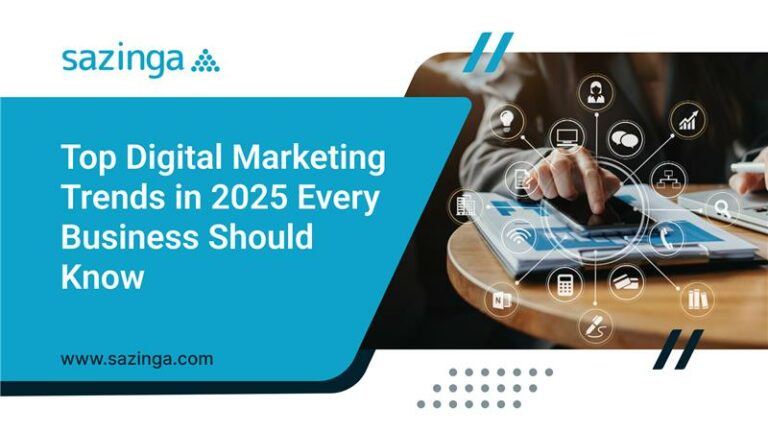Social Media Marketing 2025: What Every Brand Needs to Know
Social media marketing was once a straightforward way for brands to stand out, but by 2025, the landscape has become far more complex due to technological advances and shifting user behaviors. With 5 billion active users on platforms like TikTok, YouTube, and Instagram, competition is fierce. Marketers must now embrace generative AI, content experimentation, social listening, and the dominance of short videos to stay relevant. As audience expectations evolve, marketing strategies need constant refinement. This blog explores key trends and statistics shaping social media marketing in 2025, offering insights for brands aiming to stay competitive.
Changing Social-Media Landscape in 2025.
There are 4.8 billion social media users worldwide, representing 59.9% of the global population and 92.7% of all internet users. These numbers expand beyond the younger age groups to include all ages all over the world. This growing set of users is accompanied by a blending trend in platform features, for example; short video has become a generic form now. Hence, choosing platforms and formulating content strategy now have paramount importance. Social media cannot be termed solely as a channel for brand awareness, but it is now also heralded as a source for product discovery, customer engagement, and social commerce.
Key Trends Shaping Social Media Marketing in 2025
1. Content Experimentation and Creative Disruption
In 2025, brands are moving beyond traditional marketing by embracing creative disruption on social media, adopting unique voices and entertaining content that differ from other channels. This bold approach drives higher engagement and business impact, with marketers who consistently post creative content reporting stronger results—making creative experimentation essential, not optional.
2. AI generation integration
Generative AI has rapidly become essential in social media marketing, with 75.7% of online marketers using AI tools daily. It streamlines large-scale content creation, from captions to influencer proposals, meeting the demand for frequent posts. Notably, even highly regulated industries like finance and healthcare are embracing AI, highlighting its mainstream adoption.
3. Short-form Videos Reign Supreme
Short-form video dominates social media in 2025, with Instagram Reels, TikTok, and YouTube Shorts leading billions of daily views. YouTube Shorts alone generate around 70 billion views daily, totaling over a trillion monthly. Brands use these videos for product discovery, customer service, and authentic storytelling, emphasizing creativity and genuine engagement.
4. Social Listening and Micro-Virality
Social listening tools have gone beyond just monitoring brand mentions to become strategic areas through which a brand may jump on the latest emerging trends-jacking. This sort of micro viral activity enables marketers to adjust their content to what the audience is genuinely interested in and conversing about at that particular point in time, thereby increasing engagement and relevance. Social listening also aids in performance marketing by integrating social insights with the realization of business value.
5. Continued Development in Influencer Marketing
In 2024, 84.8% of marketers saw influencer marketing as effective; a slight increase from 83% the previous year . Social media and influencer recommendations are most responsible for product discoveries among Gen Z consumers, with 37% stating they have bought something within the last six months that was endorsed by an influencer. One notable fact is that nano influencers, those with less than 10,000 followers, return the best value; actually, they compete with and often surpass much more expensive macro-influencers in terms of returns.
6. Paid Social Media Advertising Evolution
By the year 2028, an ad expenditure of $255.8 billion may be expected among the social media platforms, with newer platforms like YouTube eclipsing Facebook in advertising reach. Paid social ads are now data-driven and hyper-personal, leveraging AI, as well as machine learning, to reach an individual decision-maker with compelling content that appears authentic and trusted. However, transparency and authenticity will thus need to be retained to breach the long-lasting relationship with the audience.
7. Platform Dynamics and Emerging Channels
While some platforms like X/Twitter have declined in popularity, and Threads has yet to fully replace them, brands must remain agile as platform preferences shift. Pinterest, Snapchat, Reddit, and newer entrants still hold niche but valuable audiences. The potential for TikTok bans in some regions adds complexity, requiring brands to diversify their social media presence strategically.
What Brands Must Do to Succeed in 2025?
Post with Purpose and Align with Business Goals
Effective social media marketing starts with clear objectives. Brands should define what each piece of content aims to achieve-whether it’s raising awareness, driving engagement, or generating leads-and ensure alignment with broader business goals. Posting frequently is important, but quality and purpose-driven content yield better long-term results.
Experiment on Creativity
The brands should not be afraid to push the creative envelope on social media and test new formats, tones, and personalities. This could even mean testing content that conflicts with traditional brand guidelines in order to engage the audience and create genuine bonds.
Use Generative AI Thoughtfully
AI must be employed so as to scale content creation while maintaining an air of authenticity. Brands should merge the generative AI content with human time and effort to guarantee full transparency and trustworthiness.
Prioritize Short-Form Video
Investing in short-form video content is essential. Brands should develop authentic, engaging videos that resonate quickly with audiences and fit seamlessly into the platform’s ecosystem, from Instagram reels to YouTube Shorts.
Utilize Social Listening for Real-Time Engagement
Active social listening enables brands to respond to trends, customer feedback, and competitor moves swiftly. Using these insights to inform content and engagement strategies can drive micro-virality and improve campaign performance.
Leverage Influencer Partnerships Strategically
Brands should diversify influencer collaborations, including nano and micro-influencers, to maximize ROI and reach niche audiences authentically. Prioritizing platforms where target demographics are most active, like Instagram for Gen Z, is crucial.
Stay Agile Amid Platform Changes
Given the fluid nature of social media platforms, brands must maintain flexibility in their strategies, continuously monitoring platform popularity and regulatory developments to adapt quickly
Summary
Social media marketing in 2025 thrives on innovation, creative experimentation, and AI-driven strategies. Brands that deliver clear messaging, embrace new formats like short videos, and leverage AI or social listening tools will stand out. Influencer marketing remains vital, but authenticity and diverse partnerships are now key. As platforms evolve and user behaviors shift, agility and genuine engagement are essential for success. By aligning social initiatives with business goals, focusing on audience needs, and continuously improving through analytics and trends, brands can unlock the full potential of social media marketing, ensuring relevance and competitiveness in a rapidly changing landscape.
Boost your brand’s visibility and maximize its reach with the help of Sazinga’s expert social media marketing service.







